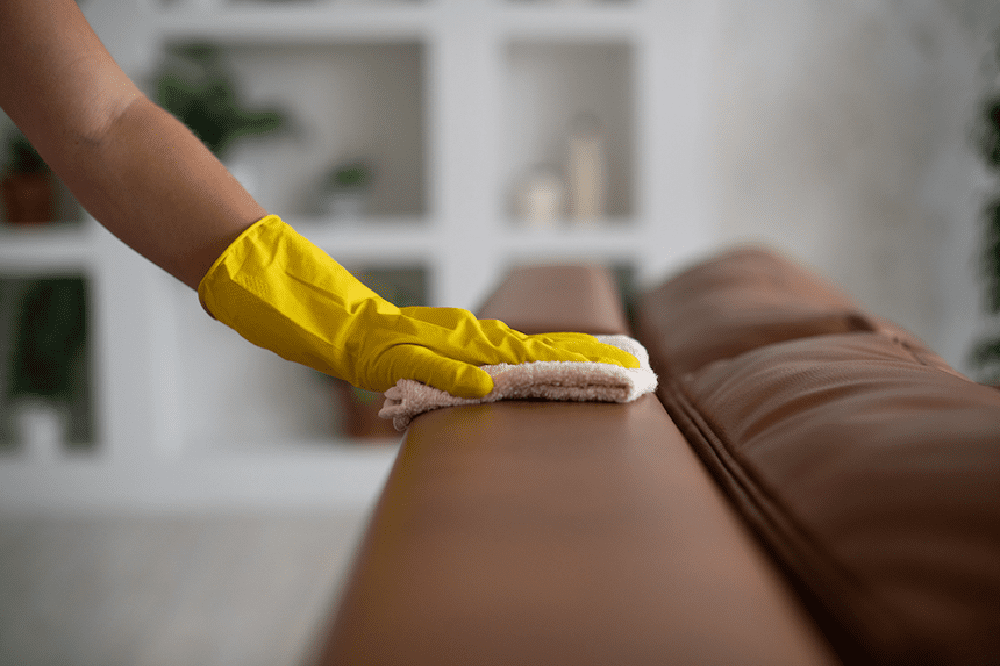Leather furniture is a luxurious and timeless addition to any home and lifestyle, but it also requires proper care and maintenance to keep it looking its best. Over time, dirt, grime, and spills can take a toll on your leather upholstery, leaving it looking dull and worn. But fear not, with the right knowledge and tools, you can restore your leather furniture to its former glory. In this comprehensive guide, we will cover everything you need to know about leather furniture cleaning and restoration, including the best products, techniques, and tips for maintaining your investment.
Understanding Leather Types and Their Cleaning Requirements
Before you begin your leather furniture cleaning, it’s important to understand the different types of leather and their specific cleaning requirements. Here are the most common types of leather used in furniture:
Aniline Leather: Also known as pure aniline or full aniline, this type of leather is dyed without a protective coating, which allows it to retain its natural look and soft feel. It is more susceptible to stains and fading, so it requires gentle cleaning methods and regular maintenance.
Semi-Aniline Leather: This type of leather has a thin protective coating, making it more resistant to stains and fading than aniline leather. Semi-aniline leather can be cleaned with mild soap and water or a specially formulated leather cleaner.
Pigmented Leather: This is the most durable type of leather, as it has a thicker protective coating that makes it resistant to stains, fading, and wear. Pigmented leather can be cleaned with a damp cloth and a mild soap solution or a leather cleaner.

Essential Leather Furniture Cleaning Products
To properly maintain your leather furniture cleaning and services, you’ll need the following products:
Leather cleaner: Look for a cleaner specifically formulated for your type of leather. Avoid using harsh chemicals or abrasive cleaners, as they can damage the leather.
Soft cloth: Use a clean, soft cloth or sponge to gently clean the leather surface.
Leather conditioner: After cleaning, apply a leather conditioner to moisturize and protect the leather. This will help prevent drying, cracking, and fading.
Leather protector: A leather protector spray can help shield your furniture from stains and spills, making it easier to clean in the future.
Step-by-Step Guide to Leather Furniture Cleaning
Follow these steps to properly maintain your leather furniture cleaning and services:
- Vacuum the furniture to remove any loose dirt and debris. Use a soft brush attachment to avoid scratching the leather.
- Test the leather cleaner on a small, inconspicuous area of the furniture to ensure it won’t cause any discoloration or damage.
- Apply the leather cleaner to a soft cloth or sponge and gently clean the surface of the furniture, working in a circular motion. Avoid soaking the leather, as excess moisture can cause damage.
- Wipe away any excess cleaner with a clean, damp cloth.
- Allow the furniture to air dry completely.
- Apply a leather conditioner to a clean, soft cloth and gently massage it into the leather, following the manufacturer’s instructions.
- Allow the conditioner to absorb into the leather for the recommended time, then buff the surface with a clean, dry cloth to remove any excess product.
- If desired, apply a leather protector spray to help prevent future stains and spills.
Leather Restoration: Repairing Scratches, Scuffs, and Fading
If your leather furniture has scratches, scuffs, or fading, you may need to take additional steps to restore its appearance:
Light scratches can often be buffed out using a clean, dry cloth or a leather conditioner.
For deeper scratches or scuffs, you may need to use a leather repair kit, which typically includes a color-matched filler, adhesive, and applicator tools.
To address fading, you can use a leather dye or recoloring balm to restore the original color of the furniture. Be sure to test the product on a small, hidden area first to ensure the color match is accurate.
Tips for Maintaining Your Leather Furniture
To keep your leather furniture cleaning looking its best, follow these maintenance tips:
- Regularly dust and vacuum your furniture to prevent dirt and debris from accumulating.
- Avoid placing your furniture in direct sunlight, as this can cause fading and drying.
- Keep your furniture away from heat sources, such as radiators or fireplaces, as this can cause the leather to dry out and crack.
- Clean spills and stains as soon as possible to prevent them from setting into the leather.
Regularly condition your leather furniture to keep it moisturized and protected.

Professional Leather Cleaning Services: When to Call in the Experts
While regular cleaning and maintenance can help prolong the life of your leather furniture, there may be times when professional help is needed. Consider calling in a professional leather furniture cleaning service if:
- Your furniture has extensive staining or damage that you are unable to address yourself.
- You are unsure of the proper cleaning methods or products for your specific type of leather.
- You simply want to ensure the best possible care for your investment.
Conclusion
Leather furniture is a beautiful and luxurious addition to any home, but it requires proper care and maintenance to keep it looking its best. By understanding the different types of leather and their specific leather furniture cleaning requirements, using the right products and techniques, and following a regular maintenance routine, you can ensure your leather furniture cleaning remains a stunning centrepiece in your home for years to come. And when in doubt, don’t hesitate to call in the professionals to help restore and maintain your investment.
